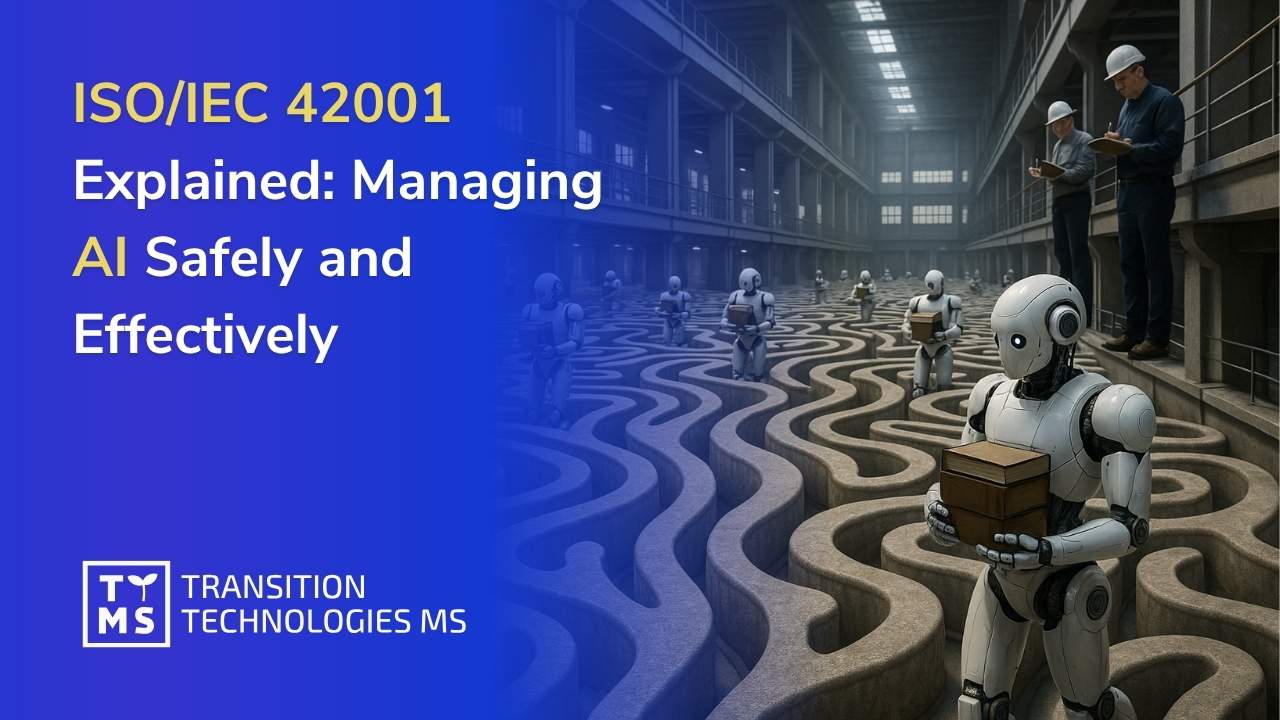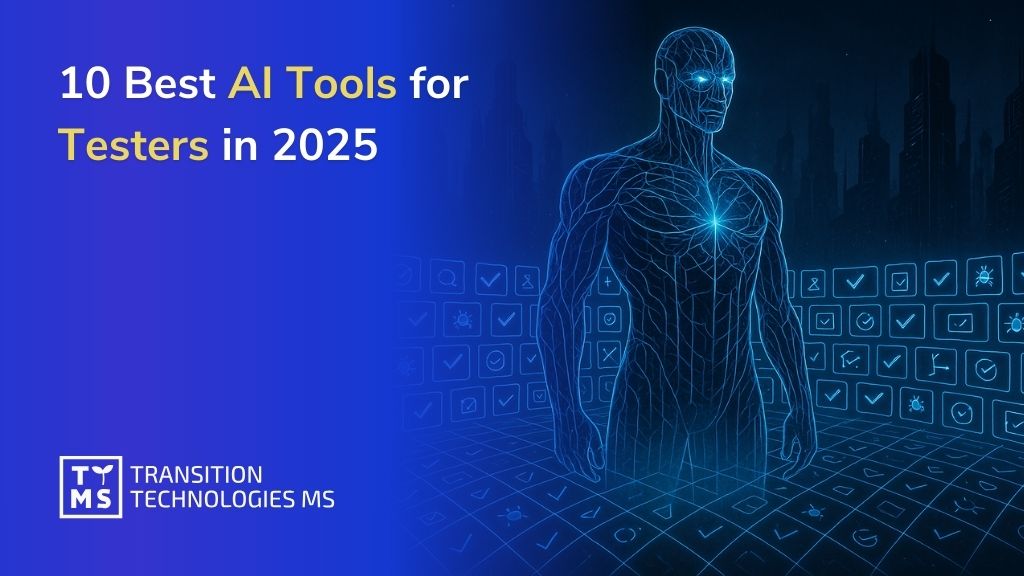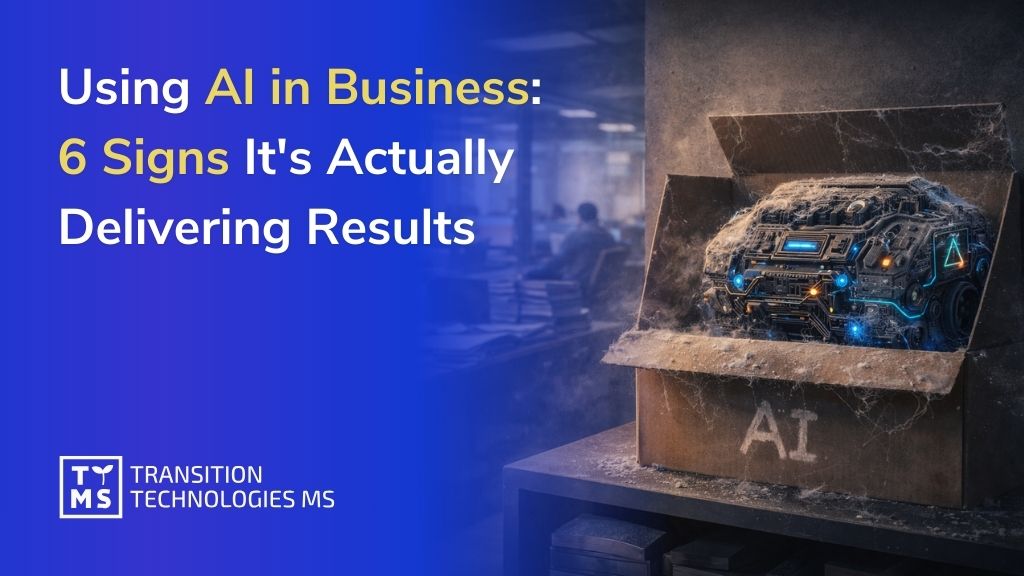
Production software has become the cornerstone of modern manufacturing and industrial operations, transforming how companies manage everything from shop floor activities to enterprise-wide processes. As digital transformation accelerates across industries, understanding what production software encompasses and how it drives operational excellence has never been more critical for business success.
1. What is Production Software?
Production software serves as the digital backbone that orchestrates manufacturing and industrial operations from initial planning through final delivery. These comprehensive platforms integrate multiple layers of technology to automate workflows, monitor real-time performance, and optimize resource allocation across entire production ecosystems.
These systems collect data from sensors, machines, and operators, providing real-time visibility that enables data-driven decisions to improve efficiency, reduce costs, and enhance product quality. Modern software solutions use artificial intelligence, machine learning, and advanced analytics to predict maintenance needs, optimize schedules, and automatically adjust processes.
2. Types of Production Software Systems
Production software encompasses several distinct categories, each addressing specific aspects of manufacturing and operational management. Understanding these different types helps organizations identify the most appropriate solutions for their unique requirements and integration challenges.
2.1 Manufacturing Production Software
Manufacturing production software represents the most comprehensive category, encompassing systems that directly manage and optimize physical production processes.
2.1.1 Manufacturing Execution Systems (MES)
MES systems act as the operational hub for manufacturing activities, providing real-time visibility and control over processes. They track work orders, manage resource allocation, quality control points, and performance metrics, optimizing throughput while maintaining quality standards.
2.1.2 Enterprise Resource Planning (ERP)
ERP systems provide a strategic foundation for manufacturing operations, integrating activities with broader business functions such as finance, procurement, and supply chain management. Modern ERP implementations focus on cloud-based architectures, offering scalability and flexibility.
2.1.3 Material Requirements Planning (MRP)
Material Requirements Planning systems focus specifically on optimizing inventory levels and material flow throughout the production process. These specialized tools manage bill of materials, coordinate purchasing decisions, and ensure that production schedules align with material availability and demand forecasts.
While MRP functionality is increasingly integrated within broader ERP platforms, standalone MRP systems continue to serve organizations with specific inventory management challenges or unique production scheduling requirements. The tight integration between MRP and shop floor systems enables dynamic adjustments to production plans based on real-time consumption patterns and supply chain disruptions.
2.2 Software Production Environment Tools
Beyond manufacturing-specific applications, production software includes specialized tools that support the deployment, monitoring, and management of software systems themselves.
2.2.1 Deployment and Release Management
Deployment and release management platforms automate the complex process of moving software updates from development environments into live production systems. These tools coordinate version control, manage rollback procedures, and minimize service disruptions during updates.
Modern deployment systems emphasize continuous integration and continuous delivery (CI/CD) pipelines that enable frequent, reliable updates while maintaining system stability. Automated testing, staged rollouts, and comprehensive monitoring ensure that new features and fixes reach production environments safely and efficiently.
2.2.2 Monitoring and Observability Platforms
Monitoring and observability solutions provide continuous visibility into system performance, user experience, and operational health. These platforms collect metrics from applications, infrastructure, and user interactions to identify issues before they impact business operations.
Advanced observability tools combine logging, monitoring, and tracing capabilities to enable rapid diagnosis of complex issues across distributed systems. Real-time alerting and automated response capabilities help organizations maintain high availability and consistent performance even as systems scale and evolve.
2.2.3 Infrastructure Management Systems
Infrastructure management platforms oversee the hardware, network, and cloud resources that support production applications. These systems automate resource provisioning, monitor capacity utilization, and enforce security and compliance policies across diverse technology environments.
Cloud-native infrastructure management has become particularly important as organizations adopt hybrid and multi-cloud architectures. These platforms enable consistent management practices across on-premises and cloud environments while providing the flexibility to optimize costs and performance based on specific workload requirements.
2.3 Industry-Specific Production Software
Different industries have developed specialized production software solutions that address unique regulatory requirements, process characteristics, and operational challenges.
2.3.1 Food and Beverage Manufacturing
Food and beverage production requires specialized software that manages recipe formulations, tracks allergens, and maintains comprehensive traceability throughout the supply chain. These systems must accommodate batch processing, manage temperature-sensitive materials, and support compliance with food safety regulations.
Advanced solutions integrate with laboratory information systems to manage quality testing results, coordinate recall procedures, and maintain detailed documentation for regulatory audits. Real-time monitoring capabilities help ensure product consistency while minimizing waste and optimizing resource utilization.
2.3.2 Automotive Production Systems
Automotive manufacturing requires software solutions to manage complex assembly, coordinate just-in-time deliveries, and maintain stringent quality. These systems must integrate with supplier networks, handle variant production, and support lean manufacturing. Modern automotive software includes advanced planning and scheduling for optimized production sequences and efficient equipment utilization, with integration to quality management systems for traceability and continuous improvement.
2.3.3 Pharmaceutical Manufacturing
Pharmaceutical production software emphasizes strict compliance with regulatory requirements, comprehensive batch traceability, and rigorous quality control processes. These systems must support good manufacturing practices (GMP), manage controlled substances, and maintain detailed audit trails for regulatory inspections.
In TTMS, we bring particular expertise to pharmaceutical manufacturing through our comprehensive validation services and deep understanding of regulatory requirements.

3. Essential Features and Characteristics
Understanding the key characteristics that define effective production software helps organizations evaluate solutions and ensure successful implementations that deliver measurable business value.
3.1 Production-Ready vs Production-Grade Software
The distinction between production-ready and production-grade software reflects different aspects of system maturity and operational preparedness. Production-ready software has completed development and testing phases, incorporating necessary operational protocols such as deployment procedures, monitoring capabilities, and support documentation.
Production-grade software emphasizes technical robustness, including proven stability under varying load conditions, comprehensive error handling, and resilience to unexpected scenarios. This designation indicates that software has demonstrated reliable performance in demanding real-world environments and can maintain consistent operation even during peak usage or challenging conditions.
Both characteristics are essential for successful production software deployment. Organizations need solutions that combine operational readiness with technical excellence to achieve sustainable long-term performance and user satisfaction.
3.2 Core Technical Requirements
Modern production software must meet increasingly sophisticated technical requirements that ensure reliable operation in complex, dynamic environments. However, organizations must navigate significant challenges to achieve these requirements successfully.
3.2.1 Stability and Reliability
System stability forms the foundation of effective production software, requiring robust architecture that handles both expected operations and unexpected edge cases. Reliable software maintains consistent performance during varying load conditions, recovers gracefully from errors, and provides predictable behavior that users and administrators can depend upon.
High availability requirements often demand redundant systems, automated failover capabilities, and comprehensive backup procedures that minimize service disruptions. Effective reliability also includes proactive monitoring that identifies potential issues before they impact operations
3.2.2 Performance and Scalability
Performance requirements for production software continue to increase as organizations process larger data volumes, support more concurrent users, and integrate with growing numbers of systems. Scalable architecture ensures that software can accommodate business growth without requiring disruptive system replacements or major architectural changes.
Modern scalability approaches emphasize horizontal scaling capabilities that add resources dynamically based on demand patterns. Cloud-native architectures particularly excel in this area, providing elastic resource allocation that optimizes both performance and cost effectiveness.
Load testing, performance benchmarking, and capacity planning have become essential practices for ensuring that production software meets both current requirements and anticipated future needs. Regular performance monitoring helps identify optimization opportunities and prevents degradation over time.
3.2.3 Security and Compliance
Security requirements for production software have intensified significantly as cyber threats become more sophisticated and regulatory requirements more stringent.
Comprehensive security frameworks incorporate multiple layers of protection including access controls, data encryption, network security, and application-level protections.
In TTMS we are using comprehensive secure IT processes, following ISO 27001 standards to establish robust information security frameworks. We are expertise in regulated environments ensures that production software implementations meet both technical security requirements and industry-specific compliance obligations.
3.2.4 Maintainability and Support
Long-term success of production software depends heavily on maintainability characteristics that enable efficient updates, troubleshooting, and enhancement over time. Well-designed systems include comprehensive documentation, clear code structure, and modular architectures that facilitate ongoing maintenance and improvement.
Effective support structures combine automated monitoring and alerting with skilled technical teams capable of rapid issue resolution. Support capabilities must address both routine maintenance activities and emergency response scenarios that require immediate attention.
Version control, change management procedures, and testing protocols ensure that maintenance activities enhance rather than compromise system stability. Regular maintenance schedules help prevent technical debt accumulation and maintain optimal system performance.
3.3 Advanced Features for 2025
Leading production software solutions incorporate advanced capabilities that leverage emerging technologies to deliver enhanced functionality and competitive advantages.
3.3.1 AI and Machine Learning Integration
Artificial intelligence integration transforms production software from reactive tools into proactive systems capable of predicting issues, optimizing processes, and automating complex decision-making. Machine learning algorithms analyze historical patterns to identify optimization opportunities, predict equipment failures, and recommend process improvements.
Applications that uses AI are particularly promising for production environments, offering capabilities such as automated code generation, intelligent process design, and advanced problem-solving support. These technologies enable production software to adapt continuously and improve performance based on accumulated experience and data insights.
3.3.2 Real-Time Analytics and Reporting
Real-time analytics capabilities enable immediate visibility into production performance, quality metrics, and operational efficiency indicators. Advanced visualization tools present complex data in intuitive formats that support both tactical decision-making and strategic planning activities.
Modern analytics platforms combine historical trend analysis with predictive capabilities that anticipate future conditions and recommend proactive interventions. Interactive dashboards enable users to explore data relationships, identify root causes, and validate improvement hypotheses through data-driven analysis.
Integration with mobile devices and remote access capabilities ensure that critical information reaches decision-makers regardless of their physical location, supporting distributed operations and enabling rapid response to changing conditions.
3.3.3 Cloud-Native Architecture
Cloud-native design principles enable production software to leverage the full capabilities of modern cloud platforms including elastic scaling, distributed processing, and advanced security features. These architectures support both hybrid and multi-cloud deployment strategies that optimize performance, cost, and risk management.
Microservices architectures particularly benefit production software by enabling independent scaling of different functional components based on specific usage patterns and performance requirements. Container-based deployment facilitates consistent behavior across different environments while simplifying update and maintenance procedures.
Cloud integration also enables advanced backup and disaster recovery capabilities that protect against data loss and minimize service disruptions during unexpected events.
3.3.4 IoT and Smart Factory Integration
Internet of Things connectivity brings machine-level data directly into production software platforms, enabling unprecedented visibility into equipment performance, environmental conditions, and process parameters. Smart factory implementations use this data to optimize production schedules, predict maintenance requirements, and automatically adjust process parameters.
Digital twin technologies create virtual representations of physical production systems that enable simulation, optimization, and predictive analysis without disrupting actual operations. These capabilities support continuous improvement initiatives and enable testing of proposed changes before implementation.
Edge computing integration processes IoT data locally to reduce latency, improve responsiveness, and minimize network bandwidth requirements for time-critical applications.

4. Key Benefits of Production Software Implementation
Organizations that successfully implement production software realize significant benefits across operational efficiency, business performance, and competitive positioning, though achieving these benefits requires careful attention to common failure factors and implementation challenges.
4.1 Operational Efficiency Improvements
Production software delivers measurable improvements in operational efficiency through automation, optimization, and enhanced coordination of production activities.
4.1.1 Streamlined Production Processes
Automated workflow management eliminates manual coordination tasks, reduces processing delays, and ensures consistent execution of standard procedures. Digital work instructions, automated quality checks, and real-time status updates help maintain production flow while minimizing errors and rework.
Integration between planning and execution systems enables dynamic schedule adjustments that optimize resource utilization and minimize idle time. Automated material handling and inventory management reduce manual material movement and ensure that required components are available when needed.
Process standardization capabilities help organizations maintain consistent quality and performance across multiple production sites, shifts, and operator teams. Standard operating procedures embedded within software systems ensure compliance with established best practices.
4.1.2 Reduced Downtime and Waste
Predictive maintenance capabilities identify potential equipment issues before they cause production disruptions, enabling proactive maintenance scheduling that minimizes unplanned downtime. Real-time monitoring of equipment performance helps optimize operating parameters and extend equipment life.
Optimized scheduling algorithms balance production requirements with resource constraints to minimize setup times, reduce inventory levels, and eliminate unnecessary material movement. Just-in-time coordination with suppliers reduces carrying costs while ensuring material availability.
Quality management integration identifies defects early in production processes, reducing scrap rates and minimizing the cost of quality issues. Statistical process control capabilities help maintain consistent quality while identifying opportunities for process improvement.
4.1.3 Enhanced Quality Control
Integrated quality management systems collect comprehensive data throughout production processes, enabling detailed analysis of quality trends and root cause identification. Automated inspection capabilities reduce reliance on manual quality checks while improving detection accuracy.
Traceability features track materials, components, and processes throughout the production lifecycle, supporting rapid identification of quality issues and enabling targeted corrective actions. Comprehensive audit trails facilitate regulatory compliance and support continuous improvement initiatives.
Real-time quality monitoring enables immediate response to process variations, preventing defective products from advancing through production stages. Statistical analysis capabilities help optimize process parameters and predict quality outcomes.
4.2 Business Performance Benefits
Beyond operational improvements, production software delivers significant business performance benefits that directly impact financial results and strategic capabilities. However, organizations must be aware that substantial challenges can limit success.
4.2.1 Cost Reduction Strategies
Effective production software deployment offers substantial financial benefits through improved resource utilization, reduced waste, and enhanced operational efficiency. Cloud ERP implementations, in particular, show strong returns compared to on-premise deployments, with businesses often reporting significant ROI post-implementation due to improved supply chain productivity and reduced upfront and ongoing IT costs.
Inventory optimization capabilities reduce carrying costs and maintain service levels through better demand forecasting and supply chain coordination. Automated processes decrease labor costs and eliminate costly errors. Additionally, energy management features optimize equipment operation to minimize utility costs, and predictive maintenance reduces emergency repair costs while extending equipment life.
4.2.2 Improved Decision Making
Real-time data availability enables managers to make informed decisions based on current conditions rather than historical reports or intuitive estimates. Advanced analytics capabilities identify trends, patterns, and correlations that support strategic planning and operational optimization.
What-if analysis tools enable evaluation of different scenarios and alternatives before committing resources to specific approaches. Simulation capabilities help predict the impact of proposed changes on production performance, quality, and costs.
Collaborative decision-making features ensure that relevant stakeholders have access to necessary information and can contribute expertise to complex decisions. Automated alerting systems notify decision-makers when intervention is required.
4.2.3 Better Resource Utilization
Real-time data and advanced analytics enable informed decision-making, identifying trends and supporting strategic optimization. “What-if” analysis and simulation predict the impact of changes. Collaborative features ensure stakeholders have access to information, and automated alerts notify decision-makers when intervention is needed.
4.3 Competitive Advantages
Production software offers sustainable competitive advantages by enabling:
4.3.1 Faster Time-to-Market
Agile management and integrated planning accelerate new product introductions. Flexible manufacturing handles variants efficiently, while supply chain integration and real-time visibility improve delivery reliability.
4.3.2 Enhanced Customer Satisfaction
Consistent quality, reliable delivery, and responsive service foster positive customer experiences. Customization capabilities and transparent communication keep customers informed and met their specific requirements.
4.3.3 Digital Transformation Enablement
Production software forms the foundation for broader digital transformation, supporting the adoption of AI, machine learning, and advanced analytics. Data integration creates unified operational views, and scalable architectures facilitate growth and global expansion.

5. Implementation Challenges and When to Avoid Production Software
Understanding the limitations and failure factors of production software implementations helps organizations make informed decisions about when these solutions are appropriate and how to avoid common pitfalls.
5.1 Top Implementation Failure Factors
Persistent challenges can lead to costly project failures or render production software unsuitable in some environments. Many ERP and major software projects fail to meet their objectives, whether through abandonment, scope deviation, budget overruns, or schedule delays.
5.1.1 Lack of Consistent Standards and Readiness
Organizations struggle to establish and enforce common standards for production readiness, leading to misaligned priorities and uneven quality. This inconsistency can result in teams skipping essential steps or applying inadequate criteria before launch, causing fragmented support and reduced system reliability.
5.1.2 Poor Change Management and Insufficient Training
Employee resistance to change and a failure to plan for user adaptation and ongoing process changes, or to properly train staff, often leave employees unprepared. This leads to disengagement and operational setbacks.
5.1.3 Unclear Ownership and Accountability
Ambiguity in who owns components or outcomes results in manual follow-up, miscommunication, and dropped responsibilities during rollout and maintenance. This often leads to fragmented support and reduced system reliability after go-live.
5.1.4 Time Constraints and Rushed Quality Assurance
Pressure to deliver quickly often means teams compromise on testing, security reviews, and formal assessments. This is a leading cause of post-implementation issues and instability.
5.1.5 Integration Challenges with Legacy Systems
Many organizations find it difficult to make new software work harmoniously with older legacy systems due to incompatible data formats, communication protocols, or insufficient middleware. This can cause inefficiencies, data issues, and operational conflicts.
5.2 When Production Software Is Not Recommended
Several situations make production software implementations inadvisable or likely to fail:
Highly Fragmented Teams or Weak Organizational Standards: If established, company-wide standards are lacking or enforcement is infeasible, production software rollouts are at significantly higher risk of failure.
Workforce Resistance or Change Fatigue: In settings where users are likely to resist new workflows due to past failed attempts or lack of inclusion in the planning process, pushing new production software can backfire.
Inadequate Leadership Commitment: Deployments without strong leadership backing, visible sponsorship, or clarity of purpose rarely achieve sustained success.
Critical Dependency on Legacy Systems: Where robust integration with older platforms cannot be achieved due to technical or budgetary constraints, replacing or supplementing with new software can worsen operational fragmentation.
Insufficient Resources for Testing: Organizations unable or unwilling to dedicate appropriate time and expertise for thorough testing, post-launch monitoring, and ongoing process alignment are more likely to experience significant issues that outweigh potential benefits.
5.3 Cost Control and Budget Realities
Software implementations often significantly exceed original budgets due to additional technology requirements and excessive customization. Organizations must plan carefully to avoid these cost overruns through comprehensive planning, realistic budgeting, and standard configuration preferences.
The financial impact of failed implementations can be severe, making risk assessment and mitigation essential. Organizations should postpone or opt for incremental modernization when core success factors cannot be adequately addressed.
6. Choosing the Right Production Software in 2025
Selecting appropriate production software requires careful evaluation of current requirements, future needs, and available solutions to ensure sustainable long-term success while avoiding common implementation pitfalls.
6.1 Key Selection Criteria
Effective selection criteria balance immediate functionality requirements with strategic considerations that support long-term business objectives and technological evolution.
6.1.1 Scalability and Future-Proofing
Scalable architecture ensures software investments remain viable as organizations grow and adopt new technologies. Future-proofing involves support for emerging technologies, compatibility with evolving standards, and vendor commitment to innovation.
Organizations should evaluate vendor roadmaps to ensure continued relevance. Modular architectures allow incremental expansion without full system replacement, supporting controlled implementation and adaptability.
6.1.2 Integration Capabilities
Seamless integration with existing systems prevents data silos, reduces manual data entry, and ensures consistent information across the organization. Modern production environments require multiple specialized systems to work together effectively.
API availability and quality are crucial for easy connection with other business systems, IoT devices, and third-party services, reducing complexity. Data transformation and mapping ensure accurate information flow and real-time updates between connected systems.
6.1.3 Vendor Support and Reliability
Vendor stability and support quality directly impact long-term success. Organizations should evaluate vendor financial stability, customer satisfaction, and track record of product development and support.
TTMS’s managed services approach demonstrates comprehensive vendor support, including ongoing system enhancement and optimization, ensuring the software continues to deliver value. Support response times, escalation procedures, and technical expertise levels are critical for rapid issue resolution, with service level agreements specifying performance requirements.
6.2 Evaluation Framework
Systematic evaluation frameworks help organizations make informed decisions by comparing alternatives against consistent criteria and objective measurements.
6.2.1 Cost-Benefit Analysis
Comprehensive cost-benefit analysis considers all direct and indirect costs, including licensing, implementation, training, and maintenance. Benefits should include efficiency improvements, cost reductions, quality enhancements, and strategic capabilities for future growth.
Total cost of ownership calculations should cover ongoing operational costs, upgrades, and potential future system changes to identify solutions providing sustainable long-term value.
6.2.2 Proof of Concept Testing
Pilot implementations validate software functionality, performance, and user acceptance in realistic environments before full deployment. Proof of concept projects should test critical use cases and integration scenarios.
A thorough requirements analysis and evaluation processes with hands-on demonstrations and scenario-based testing are emphasized to validate capabilities and identify challenges early. Performance, security, and compliance testing verify that solutions meet organizational and regulatory requirements.
6.2.3 Reference Checks and Case Studies
Reference customers provide insight into real-world implementation experiences, ongoing performance, and vendor support. Organizations should seek references from similar industries that have achieved measurable benefits and sustained successful operations.
Vendor willingness to provide references and case studies indicates confidence. Comprehensive reference checking should include technical, operational, and business stakeholders.

7. Future Trends and Innovations
Production software continues evolving rapidly as new technologies mature and industry requirements change, creating opportunities for enhanced capabilities and competitive advantages while addressing emerging sustainability demands.
7.1 Emerging Technologies in Production Software
Leading-edge technologies are transforming production software capabilities and creating new possibilities for operational optimization and strategic differentiation.
7.1.1 AI Applications
AI drives growth through intelligent automation, adaptive process design, and advanced problem-solving. This includes code generation, automated testing, intelligent process optimization, and natural language interfaces for easier user interaction. Artificial intelligence plays a key role in digital transformation.
7.1.2 Edge Computing Integration
Edge computing enables faster data processing and decision-making at production sites, reducing latency and supporting real-time control. Local processing reduces bandwidth needs, and edge intelligence allows autonomous operation during network disruptions. Distributed architectures balance central coordination with local autonomy for performance and resilience.
7.1.3 Sustainability and Green Manufacturing
Sustainability requirements drive new capabilities to optimize energy consumption, minimize waste, and support environmental reporting. Features include carbon tracking, energy optimization, circular economy support, and supply chain visibility to improve environmental impact.
8. How TTMS can help you with implementation manufacturing and production software
TTMS is a company with extensive experience in production and manufacturing software. We offer comprehensive validation services and a deep understanding of regulatory requirements, particularly in the pharmaceutical industry. Our managed services approach provides support that goes beyond standard technical assistance, including continuous system improvements and optimization. Contact us to learn how we can support your production software implementation and help you achieve maximum value from your investment.
How long does production software implementation typically take?
Implementation timelines vary significantly based on organizational size, system complexity, and readiness factors. Simple deployments may complete within 3-6 months, while comprehensive enterprise implementations often require 12-18 months or longer. Cloud ERP typically offers faster implementation than legacy systems, with time-to-value often measured in weeks to months. Phased rollout approaches can reduce risk and enable faster realization of benefits from completed modules.
How can organizations ensure successful user adoption?
Successful user adoption requires comprehensive change management that includes early stakeholder engagement, clear communication about benefits, hands-on training, and ongoing support during transition periods. Organizations must address resistance proactively through inclusive planning processes and responsive issue resolution.
How does production software integrate with existing systems?
Modern production software emphasizes robust integration capabilities through APIs, standard data formats, and pre-built connectors for common enterprise systems. However, many organizations find it difficult to make new software work harmoniously with older legacy systems due to incompatible data formats or insufficient middleware. Professional services support can help design and implement complex integration scenarios.
What security measures are essential for production software?
Essential security measures include role-based access controls, data encryption, regular vulnerability assessments, and compliance with relevant industry standards. Organizations must implement comprehensive security frameworks and maintain vigilant monitoring practices.
What factors influence production software ROI?
ROI factors include efficiency improvements, cost reductions, quality enhancements, and strategic capabilities that support business growth. Implementation quality, user adoption rates, and ongoing optimization activities significantly influence actual returns.






